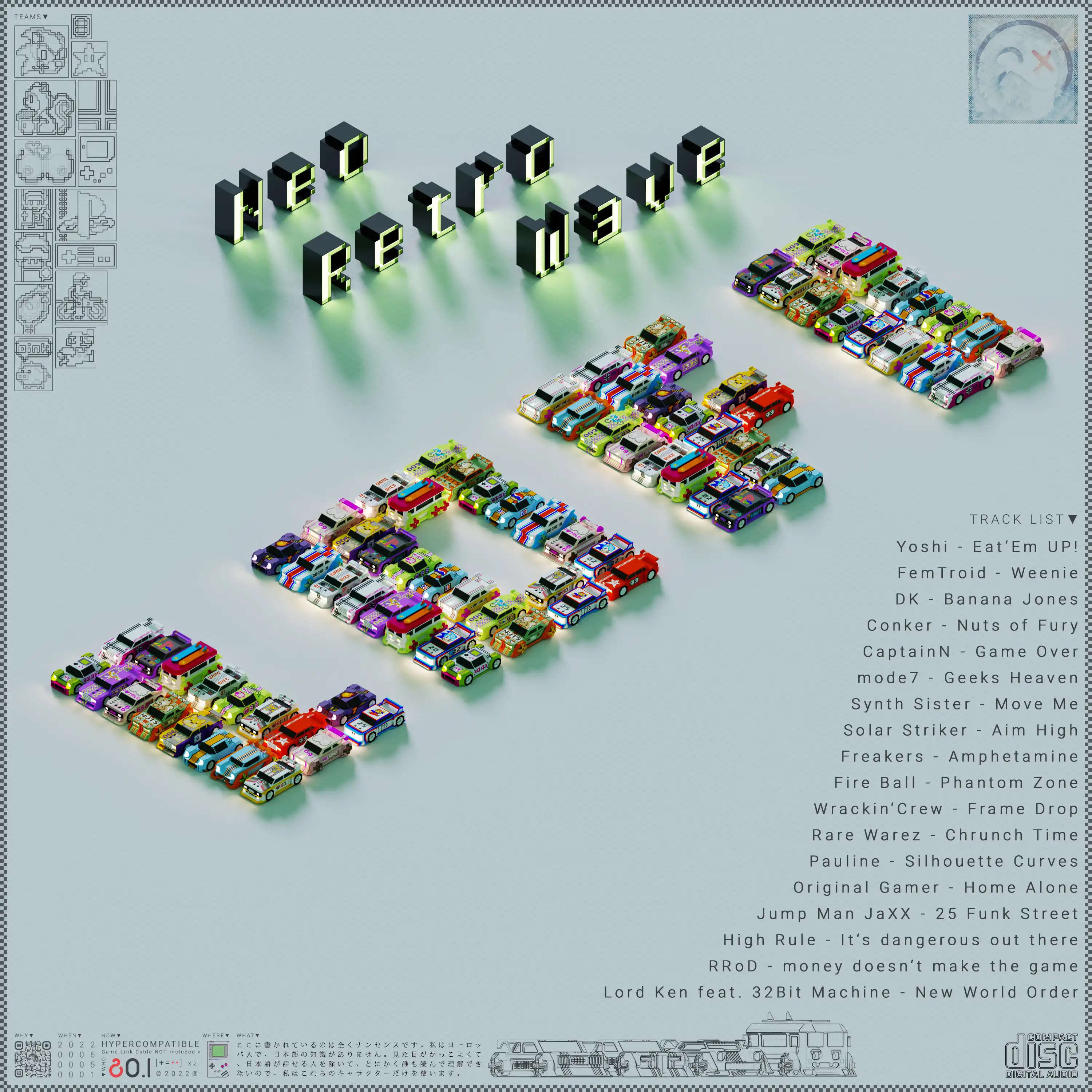ANTI-GRAVITY RACING VEHICLES
反重力レーシング車両
The "Schubumkehr" (German translation for Trust Reversal) project is inspired by the future racing video game WipeOut (PSX). Over time, the focus of this project changed from the WipeOut aesthetics to anti-gravity re-interpretations of iconic vehicles from German brands. This poject is interesting from modeling point of view. Instead of using "cubic" voxel renders of low spec voxel models I used marching cubes representations for rendering the concept designs. All models and renders featured in this project were made in free 3d graphic software Magicavoxel by Ephtracy. Post-processing was made with 2D applications like Photoshop.
Preamble
前文
Wipeout is a futuristic racing video game developed by former Psygnosis dev team from UK. The game was originally released in 1995 for Sony PlayStation (and later on other platforms). Set in 2052, the title features racing challenges on several tracks around the world with sub-sonic anti-gravity gliders vehicles. Unique at the time - compared to Nintendo's F-Zero IP - Wipeout was noted for its futuristic setting, weapons designed to both stall and destroy enemy opponents and its marketing campaign designed by Keith Hopwood and The Designers Republic. The game was critically acclaimed for it's great combination of music/sound, graphics, in-game physics and visual aestethics. I started this project in May 2019. My initial intention was to interpret the aesthetics of the game by voxel graphics while using the original race track textures from the WipeOut game. Fortunately, I found a blog post "Reverse Engineering WipEout (PSX)" by Dominic Szablewski. In 2015 this guy mastered to integrate major parts of the orioginal game ISO into a WebGL demo inside a web browser. Part of his ISO RIP were the original race track textures that Dominic published on his project page.
WipeOut in MagicaVoxel
MagicaVoxelでのワイプアウト
Importing the original game textures into MagicaVoxel was a no-brainer. You just need to drag'n'drop the *.webp files into the modelling space. Re-building the race track was a different story. It wasn't possible to project the texture out-of-the-box to the race track surface. Manually pushing voxel by voxel was a tedious approach. After the race track was ready 2 additional problems occured.
- The anti-gravity glider model demanded a huge modelling space.
- The available scene volume caused dimensional limitations.
For the 1st take on this subject I guess result was just okay for voxel graphics beginner. However, I was not really satisfied with the outcome, especially compared to the time spent. I had no motivation to move on with the project and gave it a break.The addressed problems from the 1st try accompanied with a downscaling and optimization of the original track texture in Photoshop, followed by an additional re-modelling iteration loop in MagicaVoxel. Generally, it isn't easy to catch up the right scale of your models at the 1st time when designing them. In this case rough sketches - even if you suck in drawing - really help to get the big picture. Especially in the context of a complex scene where [1] scene dimension, [2] interaction of objects, [3] color palatte, [4] materials and [5] envirionmental parameters relate to each other. Readability can be a helpful hint in the context of chosing the right modelling scale. Another critical disadvantage of moving far beyond the lowest possible voxel count is that the whole modelling process becomes really time consuming (we speak about >8h or even days). In this case one shall really think about switching to low-poly models in Blender etc. where scalability isn't a big issue. After finding the right scale factor the upcoming process steps were straightforward. [1] Concept of the overall race track (time effort ~ 0.5h). [2] Track decomposition into standardized track segments like curves, slopes and of curse loopings; and the modelling of the segments (time effort ~ 12h). [3] Assembly of the final race track (time effort ~ 2h).
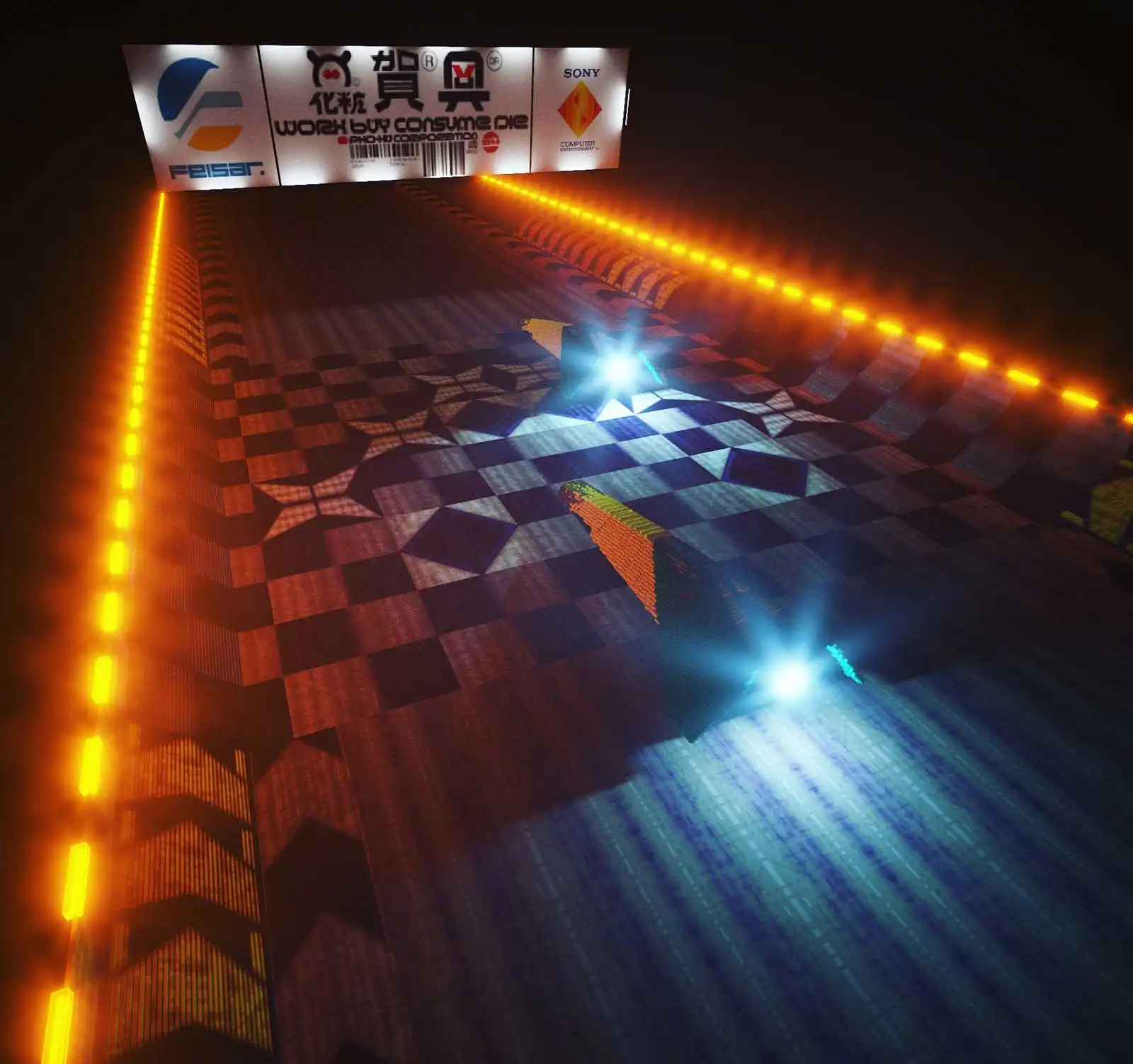
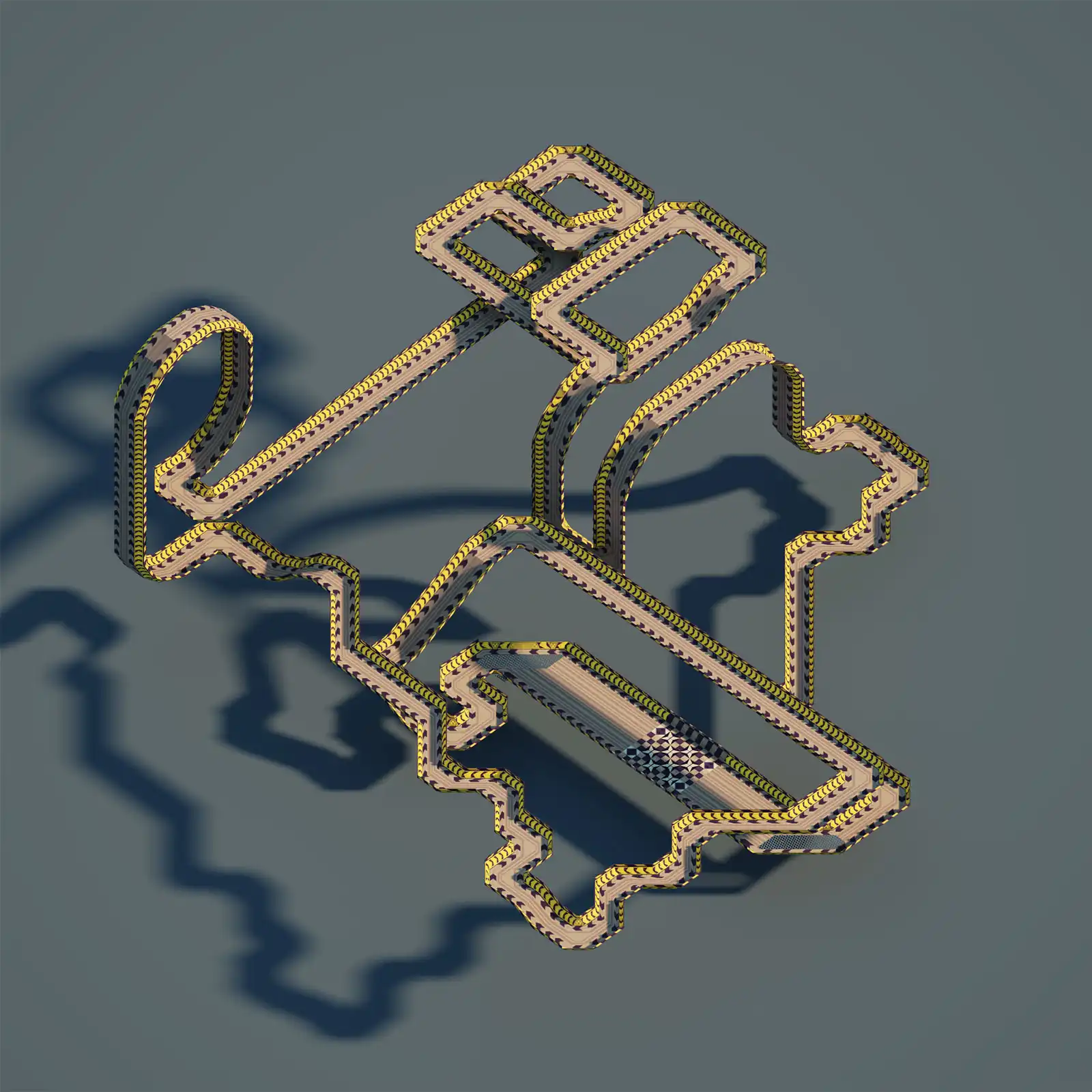
Glider Design
グライダーデザイン
During the design evolution the glider's dimensions changed signifacantly. I started with a large volume model of 70x143x35 voxels (very 1st attempt) and ended up with a tiny model of 20x40x9 voxels. Interestingly during the design concept of gliders I decided to create original designs instead of just copying or adapting the original designs from WipeOut. I'm a big fan of forward swept canards/wings and prominent air intakes.
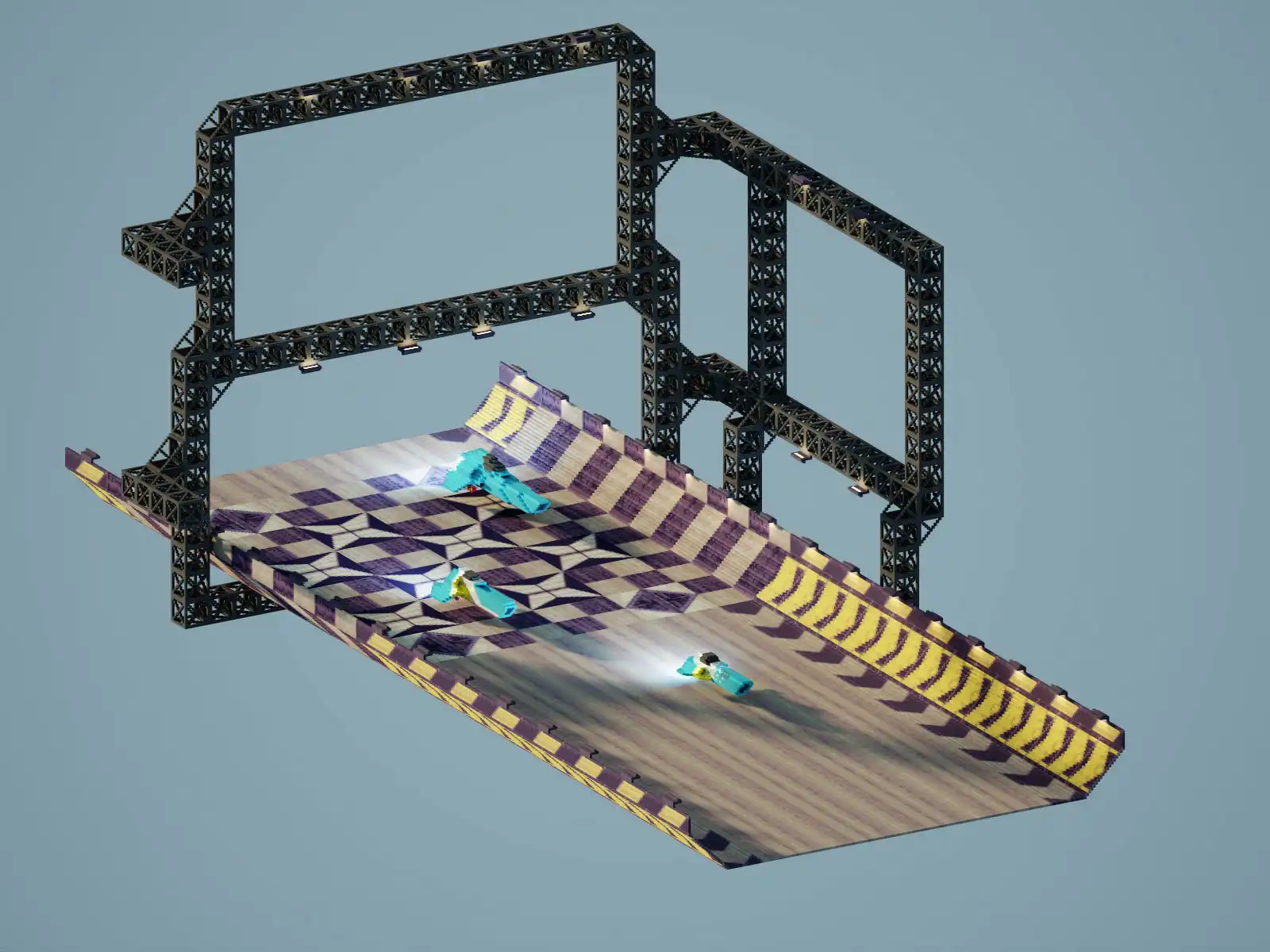
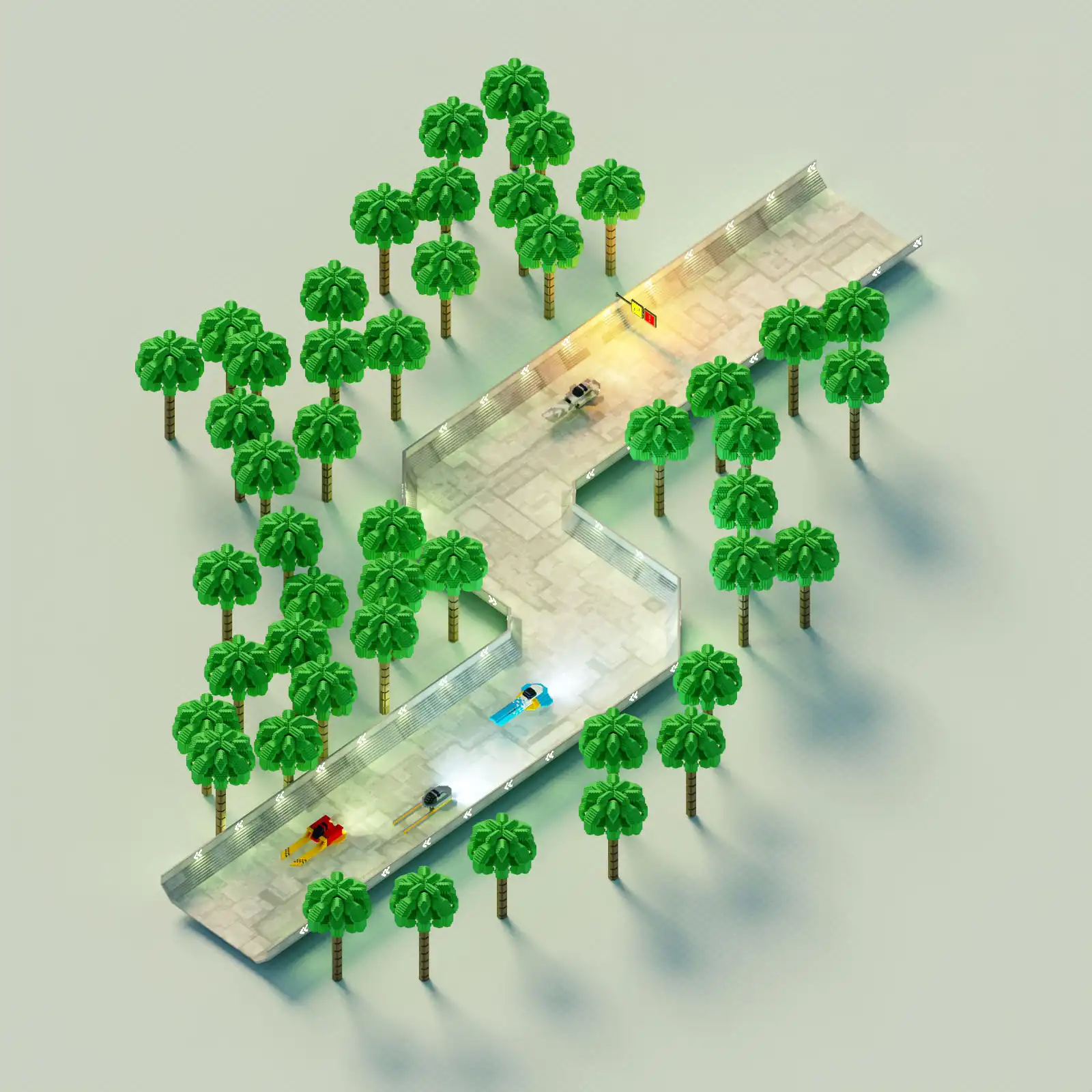
In the last period of this project I also thought about alternative race track textures and a possible future outlook. Refering to the race track textures I designed a more futuristic texture pack. I combined the track lighting and direction arrows within one graphical element and included the last named into the crash barriers.
At this point I lost motivation to work any further on the WipeOut interpretation in MagicaVoxel. I put the whole project on hold.
Neo Retro Wave
ネオ・レトロウェーブ
A proverbial "Schubumkehr (trust reversal)" was necessary to proceed with this project. A good candidate for this project reload was the experimental project "Detonator". "Neo Retro Wave" is different to the color style of "Detonator". Instead of using mainly purple and dark blue tones like it is often the case in "Vapor Wave" related design I used more light color themes. It is also different to the WipeOut related stuff. Instead of anti-gravity gliders I adapted iconic designs from 20th century cars. I focussed manly on 1980s cars from German car OEMs. This includes ...
- AUDI Quattro S1
- BMW M5
- Mercedes-Benz AMG E-Class
- Porsche 911
Especially for the AUDI, BMW and Porsche I tried to adapt the typical clor sceme of the original cars. For the AUDI it is the iconic white and yellow combination from the Rally cars. During the 1980s BMW sport cars had a combination of two different blue tones and red on a white base color. Regarding the Porsche the most iconic color combination was the Gulf Blue with a orange tone. The general dimension ratio was 10 voxels = 1 Meter.
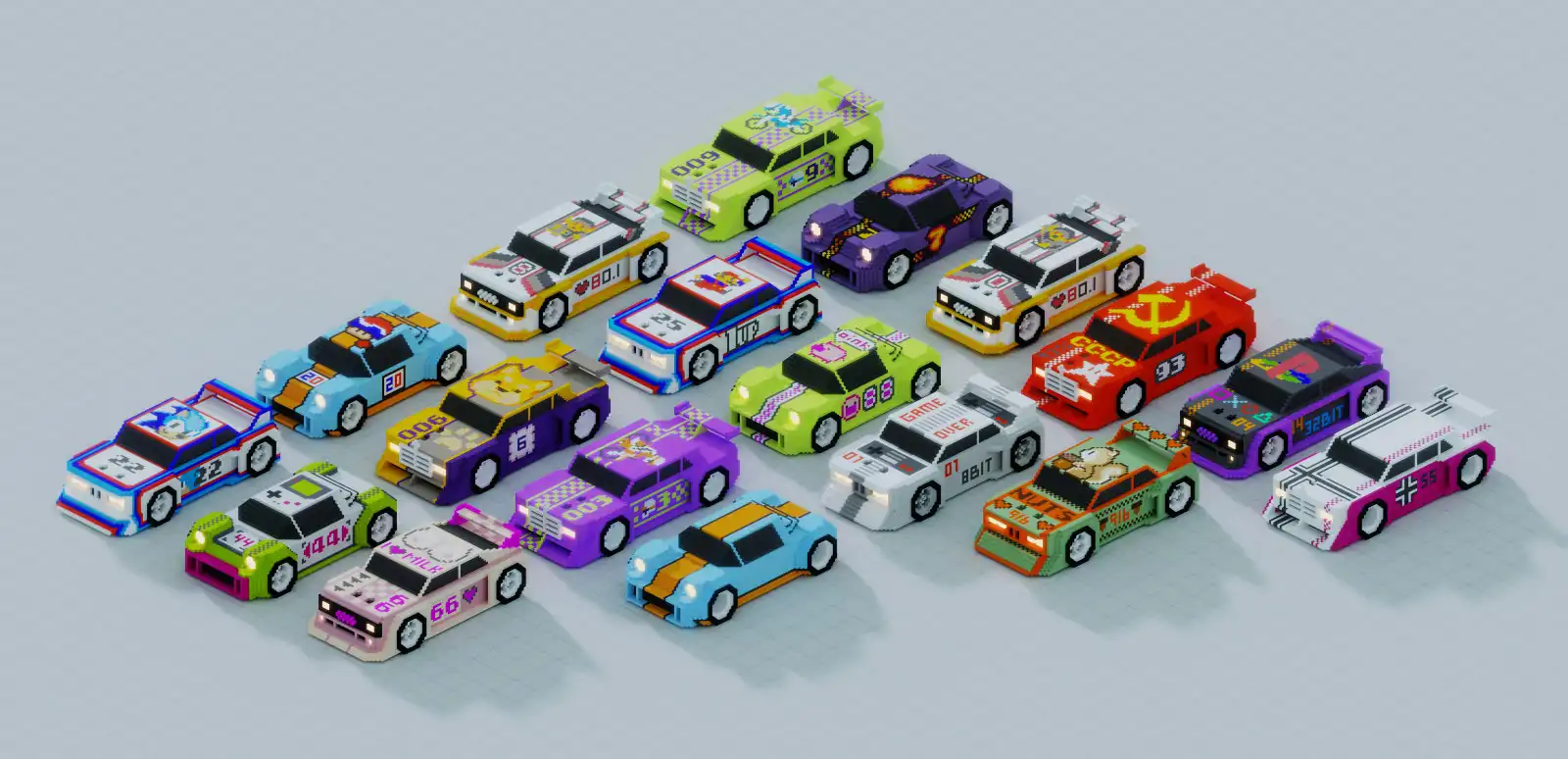
Adapting solely the color scheme was not enough because the models would look too boring. To add more details to the bodywork of the car models I redraw pixel art textures inspired by video game related graphics or other topics. This included ...
- Sonic and Mario,
- NES, GameBoy and PlayStation,
- Super Mario Bros. power ups,
- Excite Bike and Zelda,
- a squirrel, pig and pixel tits.
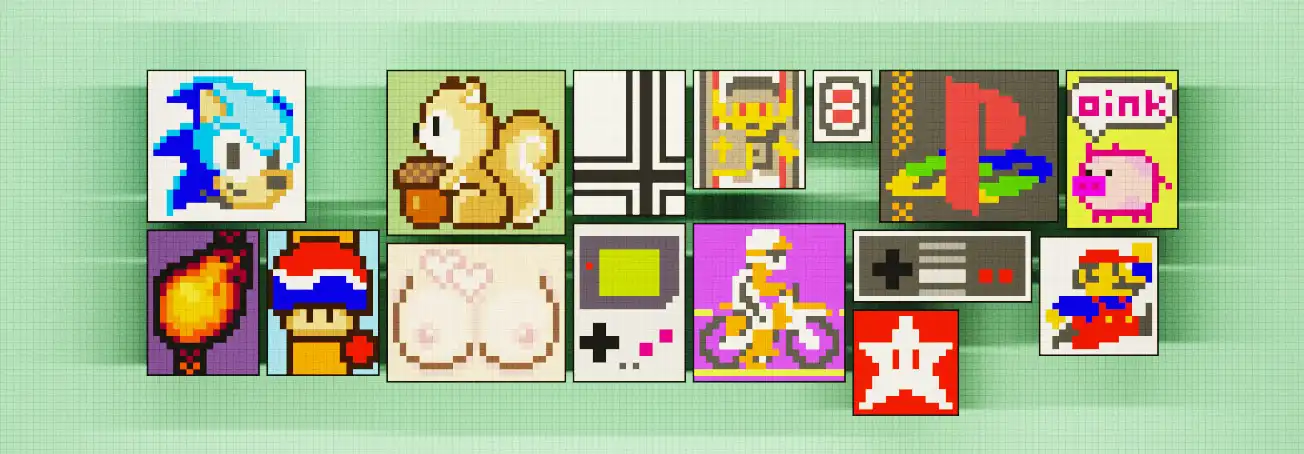
So many different car models ... and now? What to do with them? From the beginning of this project I thought about making a Ridge Racer Type 4 inspired artwork. The 1st idea that came into my mind was to the car models to make a lettering like it was done for the cover art of Ridge Racer Type 4 OST cover art. Just putting many cars on a yellow plane forming the word "LOFI". The big difference here, in the original artwork by NAMCO they used only three different models with no textures to do so. I used four different car models with four unique texture packs for each car. This resulted in 16 different variations that I used in the final lettering.
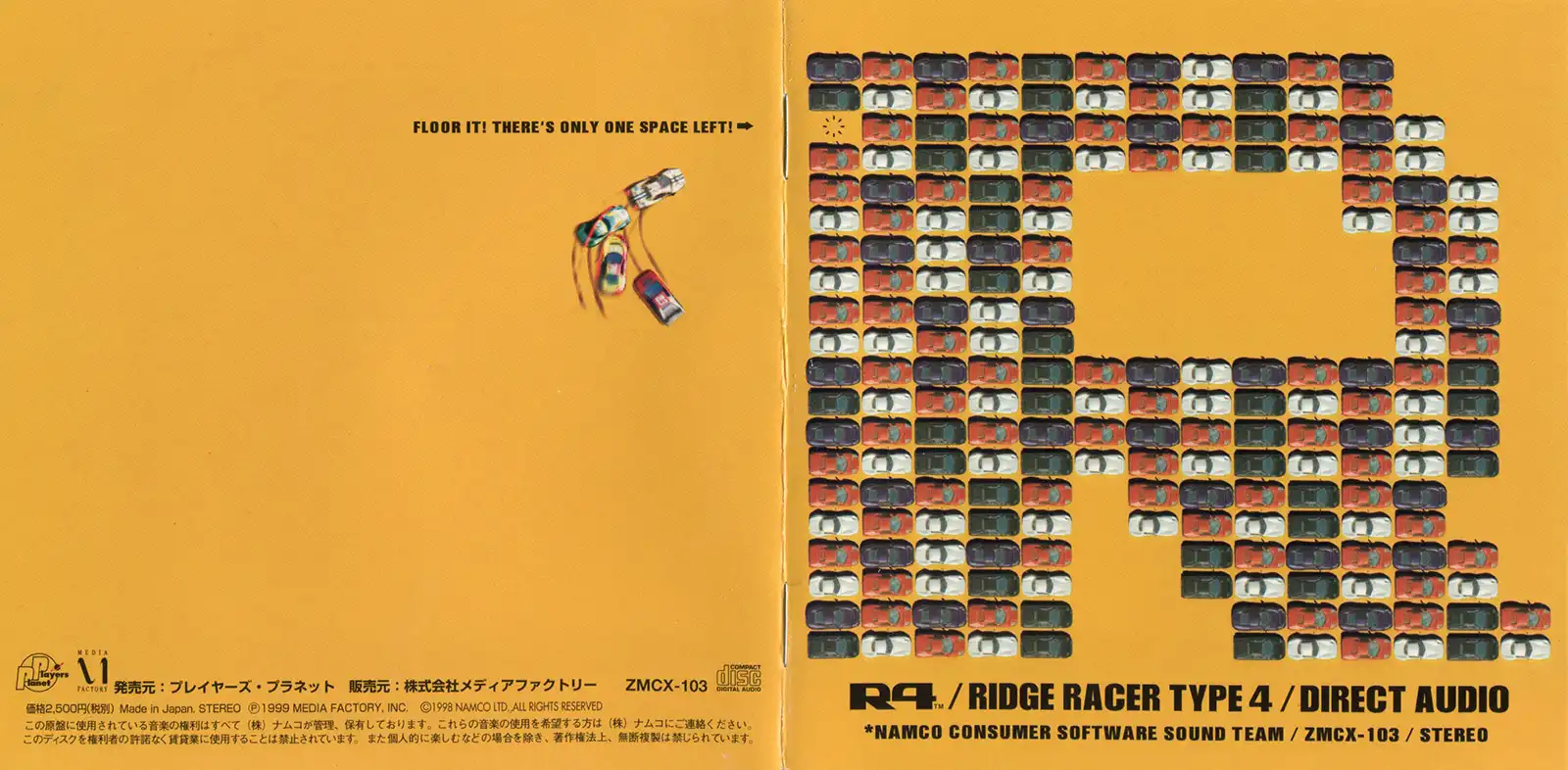
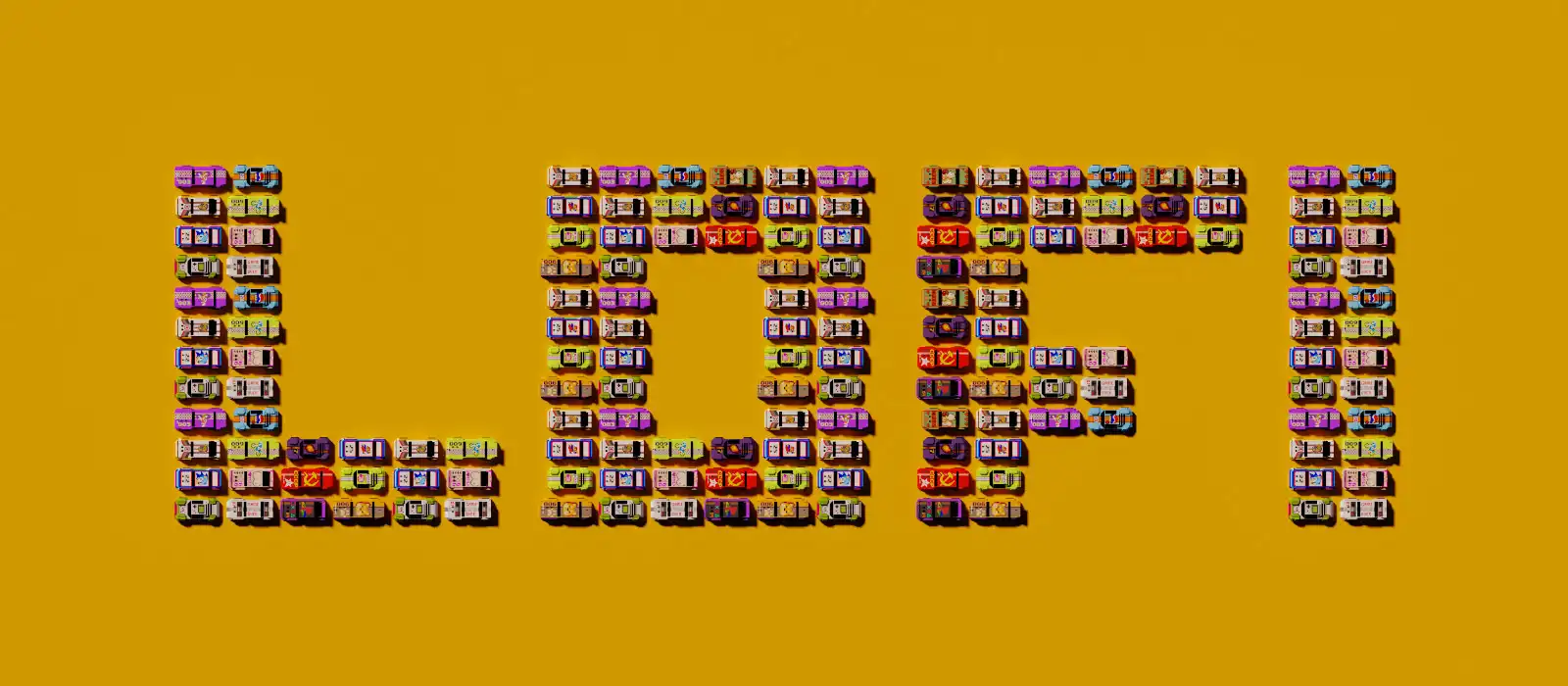
Design Evolution
デザイン進化
Over the time I started to clean up the models within re-design iteration. The AUDI Quattro S1 is a good axample for this. [v1.0] the initial design that came close to the world famous Rally car from the 1980s with some nerdy pixel art texture. [v2.0] cleanded version with optimized wheel technology. Here I adapted the wheel hub engine with integrated torque motors from my "MILO" concept that I did in 2012. [v3.0] the future began here. I substituted the conventional wheels by an anti-gravity chassis with integrated rotors. I added a more progressive rear wing design that is integrated into the roof line. [v4.0:] final evolution: Based on the anti-gravity design from v3.0 I re-designed the front area of the vehicle. More progressive lights, front spoiler, cooling intakes integrated into the front hood and a cleaned brand logo. I also optimized the rear wing design and the backlights. The design of this vehicle had perfect surface transitions when rendereing in Marching Cubes mode. We will see that later.
I was really satisfied with the final design. So I did the same for the other car brands too, except of the Mercedes-Benz. It is not because I didn't like the model or the brand, I just needed a new platform for making something more wild.
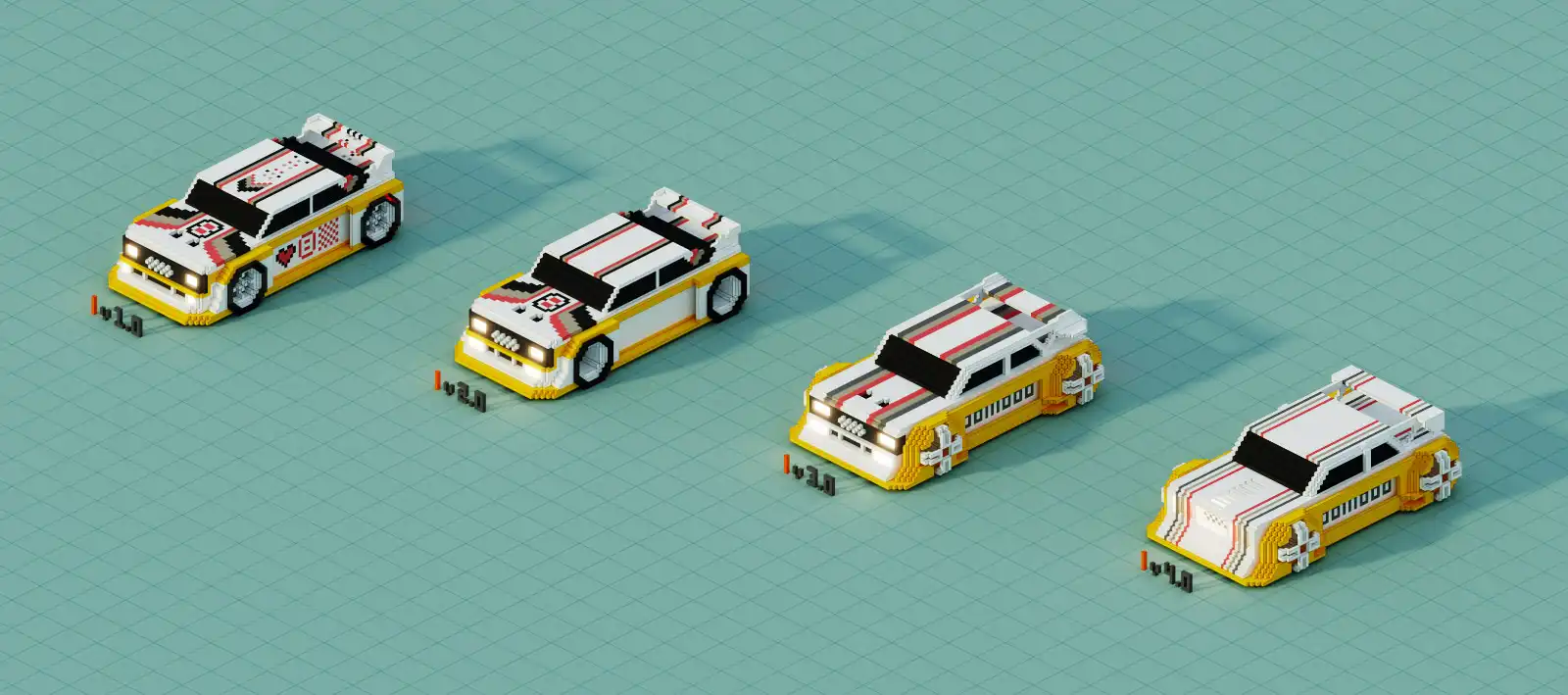
The Final Generation
The AUDI Quattro MK4 is my favourite model. I put much polishig effort in it an gave it my favourite "Pixel Tits" texture (you will see it later). I like the front and rear lighting area very much. I added single beems in front of the lights. Each voxel was placed carefully here. In Marching Cubes render mode this model looks really great.
The BMW M5 MK4 has also a strong design. I like the air intakes at the front much. It is a homage to oldtimer BMW models. The characteristic grill design of current BMW models comes very close to it. I also like the integration of the rear wing into the anti-gravity chassis much. Really powerful like the DNA of this brand.
Car design compilations without a Porsche make no sense. When it comes to racing then Porsche is a prerequisite. If those car models would be implemented in a racing game the 911 MK4 would be the speed king. I tried to adapt the iconic front lights from the original cars in small voxel scales. The front spoiler takes over the function of being a geometrical connection between the drive train chassis and the main body.
As mentioned before I substituted the Mercedes-Benz model by an alternative iconic car. During the design phase of "Neo Retro Wave" I always thought about to make something like a wild future version of a Mercedes-Benz G-Class or a Volkswagen Bus from the 1960s. I decided to go with the bus. I called this vehicle the VW BUS MK4 6x4. This vehicle has power and a friendly attitude. Yes it has a funny face with those eyes (lights), ears (side mirrors) and mouth (huge air intake). In the rear I adapted the idea from the Porsche design with horizontal beams at the window. I also added small wings at the rear and of course two surf boards on the roof.
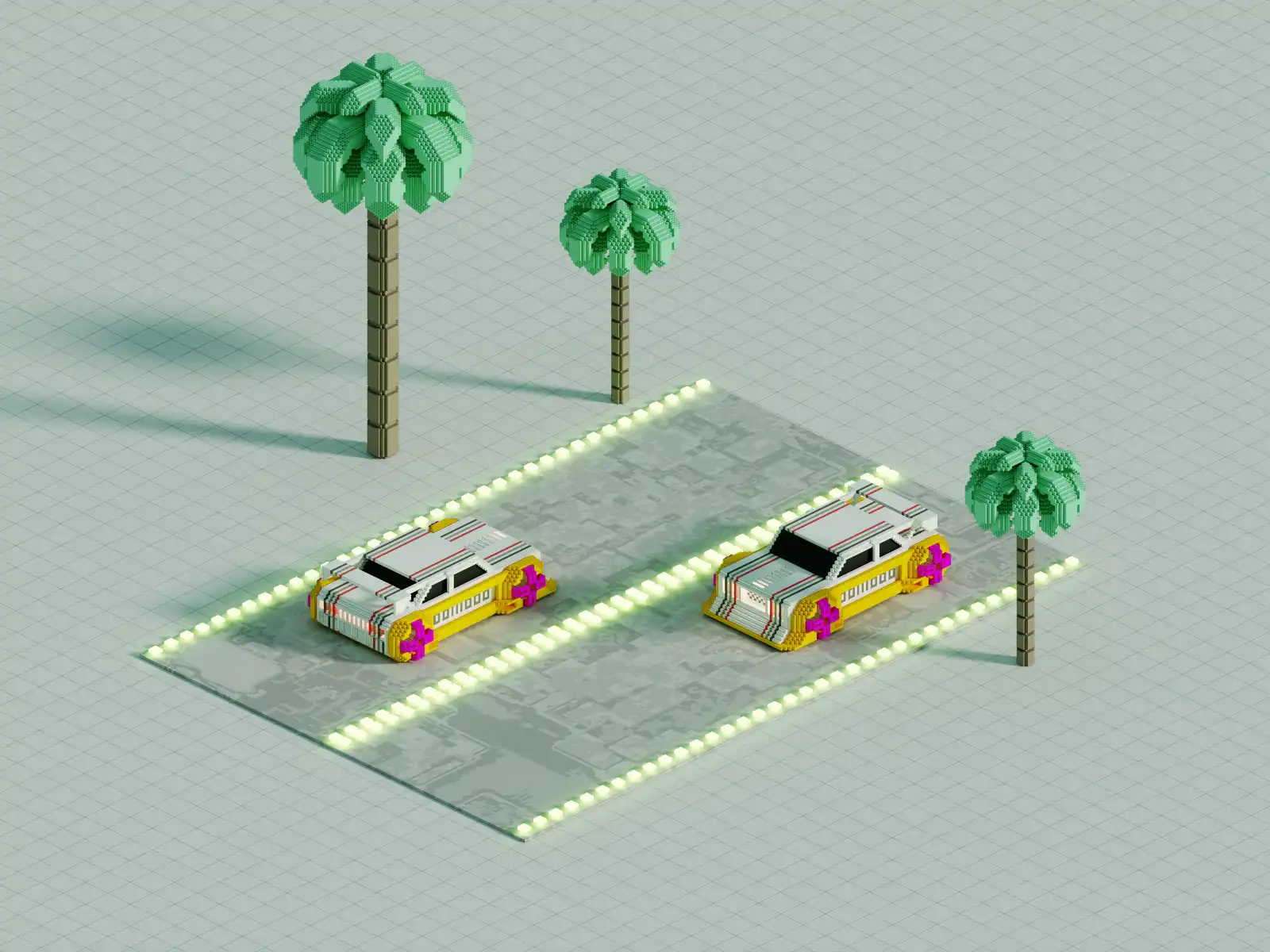
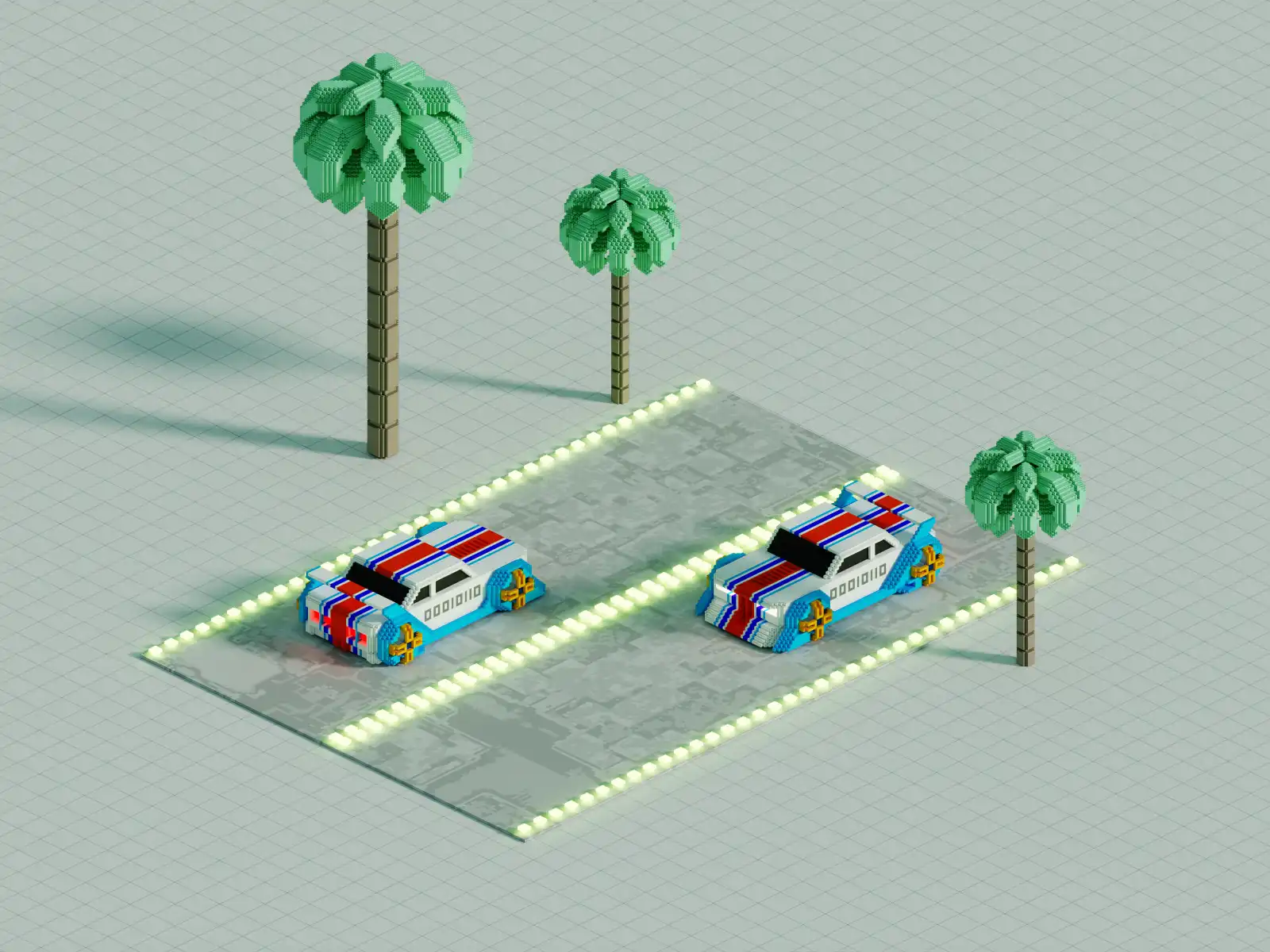
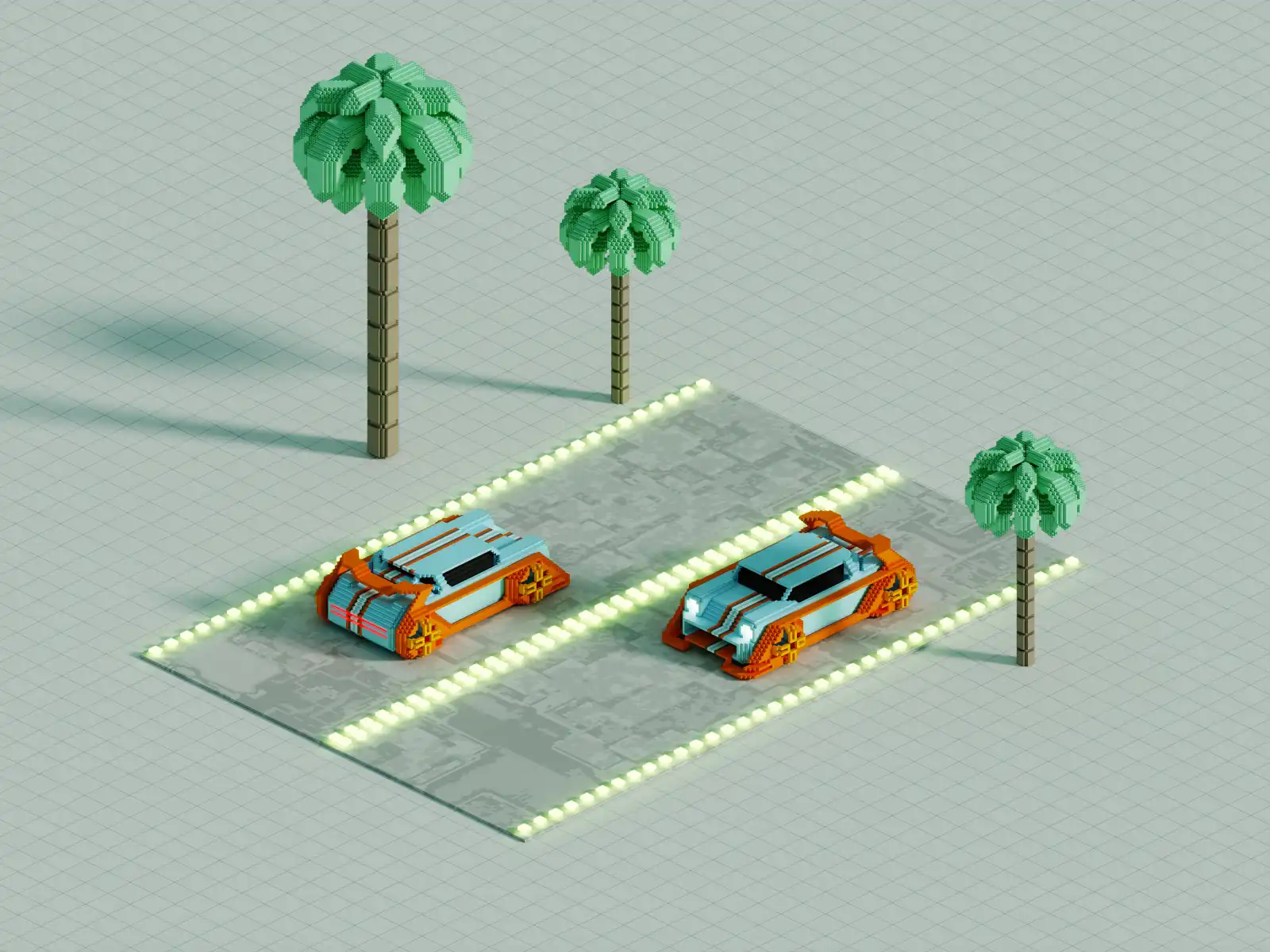
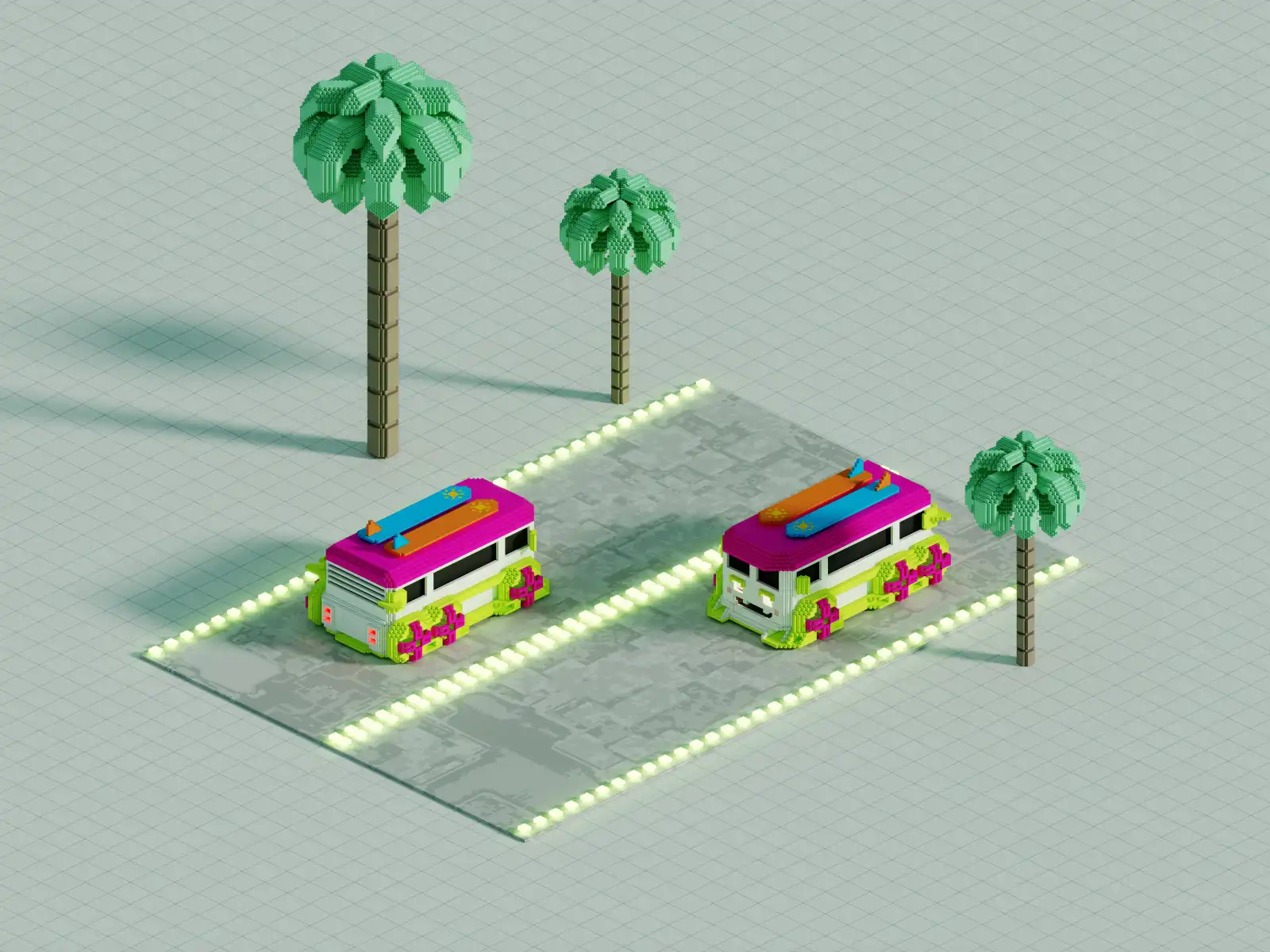
The next pics shows the Marching Cubes render of the AUDI Quattro MK4 and BMW M5 MK4 with alternative textures. This render shows the surface transitions, undercuts and other design. I used Marching Cubes render mode a lot in the "Metal Fear" project.

CD Cover Design
CDカバーデザイン
After a year I thought about recycling the "Neo Retro Wave" models in a different project. Possible ideas were [1] low-poly re-design in Blender software, [2] voxel graphics racing scene video, [3] CD cover design (adaption of Ridghe Racer Type4), [4]tech demo in Three.js. I decided to do a CD cover design because all other ideas would accompany with too much work at the moment. For saving time I reused material from past projects like vector illustrations from "8-Bit.Labs" and pixel art that I originally created for car textures in "Neo Retro Wave". I also re-used old car designs from this project and some grunge art that I haven't published yet. The most funny part within this project was to brainstorm a fantasy music track list with 18 tracks:
- Yoshi - Eat‘Em UP!
- FemTroid - Weenie
- DK - Banana Jones
- Conker - Nuts of Fury
- CaptainN - Game Over
- mode7 - Geeks Heaven
- Synth Sister - Move Me
- Solar Striker - Aim High
- Freakers - Amphetamine
- Fire Ball - Phantom Zone
- Wrackin‘Crew - Frame Drop
- Rare Warez - Chrunch Time
- Pauline - Silhouette Curves
- Original Gamer - Home Alone
- Jump Man JaXX - 25 Funk Street
- High Rule - It‘s dangerous out there
- RRoD - money doesn‘t make the game
- Lord Ken feat. 32Bit Machine - New World Order
I added some mandatory text in Japanese Kanji script that hasn't a deeper meaning. As well as a scheme for the realease date. This scheme is more or less a matrix of 4 x 4 numeric charactes; and adapted by an old concept for the so called Status Grid. By the way, in the meantime I set up a project page for the Status Grid which can be found here -> Status Grid.
